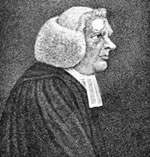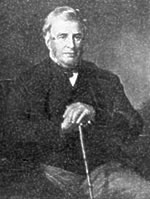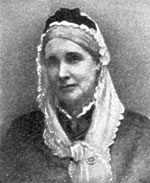Reformation. The year of the erection of the Babington monument, 1538, was a remarkable year, in this respect, that the Great English Bible was issued in that year, and it is possible, but most unlikely, that a copy was obtained, and chained in Kingston Church. However, that may be, the Roman Catholic form of service, rendered in Latin, was superseded a few years afterwards; and on Whit Sunday, 1549, the service was for the first time rendered in the church in the English language. A change was again made in 1553, on Queen Mary ascending the Throne, but the form, as given in the Book of Common Prayer, was restored on June 24th, 1559. In 1645 the use of that book was made penal, but from 1660-2 it has continued for the guidance and help of succeeding generations.
We have no information as to how Kingston was affected by the Civil War, but we know that the administration of justice was largely suspended for ten years, and that bad characters took advantage of the state of affairs, and resorted to crimes of violence, especially where the population was thinly spread, and protection more difficult. While Nottingham went for the Parliamentary party, the villages were for the King, and there would be great satisfaction when there was again law, order and quietness.
The Parliamentary Commissioners of 1650 reported that they found the value of ''Kingston Lordshipp to be about nine hundred pounds per Annum and that theirout the Lady Hides, the owner thereof, payeth unto Richard Hickman, Clerke, Curate there onely tenne pounds per annum for supplyeing the Cure." (Godfrey 196)
The church was visited in 1819, by Mr. Stretton, who made full notes of its state, from which it appears that the chancel was then in a ruinous state, and it was grievous to witness the delapidations. He, however, refers in high appreciation to "the singularly beautiful and curious monument," with its picture of the Judgment, and notes that "in the Chapel of Saint Genevieve in the Cathedral Church of Notre Dame, in Paris, is a similar carving in a tablet of stone which was executed at the beginning of the 16th century."
A tower, and spire, at the south end of the Church, appears to have been erected in 1832.
Re-building. When the present church was rebuilt, great care was exercised in regard to the Babington Chapel, by the marking, and, where practical, re-instatement of the old stones. A bronze tablet records that ''The nave, aisle, and tower of this church were erected, and the chancel and chancel aisle restored, A.D. 1900, by Henry, Lord Belper, in memory of his son William Strutt, born February 8th, 1875, died October 6th, 1898.'' An eastern window was erected to the memory of Arthur Strutt, by his brothers and sisters, 1877. There is an inscription on a marble tablet, erected on the north wall of the chancel, to the memory of the first Lord Belper, which is appropriate to his life, and worth noting. It runs as follows: "Keep innocency, and take heed to the thing that is right, for that shall bring a man peace at the last." The church is in the Perpendicular style, but to some extent made to harmonize with the original architecture. The tower has a new clock, and three bells. Alabaster, as being a local product, has been very properly much used, and carefully selected. The cost was £4,757, in addition to which £600 was spent in furnishing with seats, organ, etc. Lord Belper gave the reredos.
Over the eastern window on the exterior are shields bearing the arms of Babington, Ferrers, Stanhope and others.
For ecclesiastical purposes the parish is not joined with Ratcliffe, as of old, that parish being now linked with Gotham, while Kingston is now joined with West Leake, the Rev. R. O. Jones, M.A. being Rector of the latter, and Vicar of the former.
In a niche of the gable of the porch of the church is a statuette intended to represent St. Winifred, her hand resting on a cross. There has for years been a supposition that St. Winifred was the patron saint, and as the true philosophy of life is to get the best out of everything, we will take this figure as a sermon in stone. St. Winifred, according to the legend, was a noble British maiden to whom virtue was dearer than life, and when she repelled the unholy proposals of Prince Caradog, he cut off her head, which rolling down the hillside, there sprang up a fountain of water with healing powers, and not only was the head restored, but the saint lived 15 years afterwards, and over that spring was built a church, at Holywell, in Flintshire, to which pilgrimages were made, with beneficial results. The meaning of all this is that joy and reward sprang from right doing, that virtue is dearer than life, and, as expressed under the City Arms of Nottingham ''Vivit post funera virtus''—Virtue lives after death.
A Lych gate entering into the Churchyard, was erected by the inhabitants at the Coronation of King Edward VII.
The church register of marriages from 1755-1811 have been extracted by the Eev. John Clough, Rector of Wilford, and published by Messrs. Phillimore and Co. There is a register of burials commencing 1657, and of baptisms commencing 1690.

John Berridge.
One of the remarkable evangelistic clergymen, who with Whitfield, Wesley, Simeon, and others, stirred England in the 18th century, was born here. John Berridge was a wealthy and reputable farmer and grazier at Kingston, who was married to Sarah Hathwaite, of Nottingham, and they had 4 sons, the eldest, also named John, being born at Kingston, March 1st, 1716.
He was educated at Nottingham, and at 14 left school to become a farmer, continuing on his father's farm 5 years. A tailor, who was occasionally employed in the family, frequently conversed with him on serious sub jects, and he very early became thoughtful and earnest. His parents therefore, when he was 18, decided to send him to the University, and after a previous preparation, he entered Clare Hall, Cambridge. In 1749 he became curate of Stapleford, Cambridge, (continuing his work at the University), and in 1755 he became Vicar of Everton, where he continued until his death in 1793. He was a man of earnest convictions, and great energy. At college he studied fifteen hours a day, and continuing there so long, became inferior to few in his knowledge of literature and science. He had a broad and strong understanding, and a fund of wit and humour, which ran through his discourses. He had great activity, and could not confine himself to his parish, for he was moved with compassion, and made itineraries of half a dozen counties, preaching ten to twelve sermons a week, and frequently rode a hundred miles, and this he continued for 20 years. He was very generous, and gave largely. An immense concourse of people from all parts of the country, attended his funeral. His book, The Christian World Unmasked, may still be seen at the Libraries. His age was 77.
Kingston village.
The Village. The village green has in its centre the village pump, surmounted by a canopy, it being the only pump near. The farmhouses are comfortable, one of them being the Manor House, where Mr. T. Turner, who may be described as the parish factotum, resides. It was formerly occupied by the Stokes', one of the oldest families in the parish. On the head of a spout of the house appears the date of 1739. The house occupied by Mr. Beeby looks some what older. This aged worthy is over 80, and he has been churchwarden 48 years. There are a number of attractive looking cottages, built about 60 years ago, when probably the inferior ones were swept away. In 1790 Throsby noted that "the village contains about 30 dwellings, and it had 1100 acres of old enclosed land, divided into three farms, exclusive of some patches of home ground attached to some inferior dwellings.'' The Duke of Leeds was then Lord of the Manor.
The population was in 1801, 152; in 1851, 196: in 1901, 271, and in 1911, 265.
There is a public elementary school, called Lady Belper's school, which is evidently doing good work, as is testified by the certificates as to Nature Study, and Needlework, and by the Inspector's Reports.
The Hall. Kingston Hall is a splendid stone mansion in the Elizabethan style, built in 1844-5 by Edward Strutt, Esq., M.P., who in 1856, was created Lord Belper. It stands on an eminence, and has extensive and beautiful prospects of the surrounding country. The works to the accessory buildings, and the beautiful gardens, grounds, and lake, were continued by Lord Belper, as well as by the present Lord Belper, who succeeded to the title and estate in 1880.

Lord Belper.
The work of the first Lord Belper is so prominent, meeting the eye at every point in the parish, that a notice must be given of him. I have a distinct recollection of seeing him on the platform of the Exchange Hall, in Nottingham, in 1852, having a portly figure and full face, above the average height,
''Like a fine old English gentleman,
One of the olden time."
He was then plain Edward Strutt, Esq. He had represented Derby in Parliament 16 years, and Arundel for a short time, and from 1852 to 1856 he was M.P. for Nottingham, when he was elevated to the Peerage as Lord Belper. Among the appointments he from time to time held, was that of Chief Commissioner of Railways, Chancellor of the Duchy of Lancaster, President of the University College, London, Lord Lieutenant of Notts., etc. He took great interest in scientific matters, as may be indicated by the fact that he was elected a Fellow of the Royal Society. He was Hon. LL.D. of Cambridge, Fellow of the Geological, and Zoological Societies, etc. He died in 1880, aged 79.

Lady Belper.
Lady Belper's memory is cherished by the people, not only of Kingston, but also of Sutton, Kegworth, and the district, for her geniality and active benevolence, as shewn in her visits to the people at their homes, and in cases of necessity, as the Lady Bountiful; but withal for her strictness in regard to moral conduct, the broaches thereof being visited with dismissal. The Reading Room, now a part of the village school, has an inscription ''Erected in memory of Emily, Lady Belper, by her sons and daughters, 1891."
The Hon. Frederick Strutt has in the churchyard a gravestone erected to his memory, and he was one of those men whose memory should be kept green. He was a son of the first Lord Belper, born in 1843, died in 1909. He was active in local administration, for he was a member of the Derbyshire County Council, and first a Councillor, then an Alderman, of the Derby Town Council; finally he became Mayor of Derby. He took a deep interest in the Poor Law, and was for many years a Guardian, formerly in Leicestershire, and latterly in Derbyshire. He was for some years President of the Poor Law Conference of the Midland Unions, and instituted an enquiry into the statistics of the Feeble-minded. He took an active interest in Archaeology, and had a love for plants, especially Alpine ones. His garden was very beautiful, being filled principally with plants he had brought home from his travels.
In later years Mr. Strutt had a terrible gig accident whereby he lost one eye, and became so deaf that he could hear only through a trumpet, yet with a courageous persistency he resumed his pursuits, both public and private. At the time of his death he was busy making an index for the reports of the Derbyshire Archaeological Society. He left a very valuable collection of topographical books, maps, and prints relating to Derbyshire and Notts. Under his will the books were to be offered first to the Derbyshire County Council, and if not accepted, then to the Notts. County Council, and the maps and prints were left to Lord Belper, who generously divided them, and effected an arrangement whereby each Council has its own County books and pictures. There is a rough hewn granite cross erected to his memory, in the woods in West Leake parish, where he loved as a naturalist to roam.
The College. In 1892 the Notts. County Council co-operated with the Nottingham University College Committee in establishing an Agricultural Department. In 1895 the four County Councils of Notts., Derby, Leicester, and Lindsey, appointed representatives, and they agreed to join in an effort for giving both theoretical and practical instruction in Agriculture, and especially in regard to Dairying. Lord Belper let on a lease to the united body his Fields Farm at Kingston, consisting of 176 acres of land, half being in permanent grass, and half arable.
The several bodies named, appointed representative Governors, and subscribed the necessary capital expenditure, as well as annual grants, and an annual grant has been made in recent years by the Board of Agriculture.
In 1900 the agricultural instruction was transferred from the University College, and combined with the Dairy instruction at Kingston, and additional buildings were erected shortly afterwards. An unfortunate fire took place in 1903, and better buildings were erected soon afterwards.
In 1912 another farm of 85 acres, situated in Sutton Bonington parish, but near to the Kegworth Station, was acquired. This has light gravelly soil, and is intended for an experimental station. To this has now been added the purchase of a house, called ''The Elms'', with three cottages, and 15 acres of land, and on this site it is intended to erect a College building, towards which a large grant has been promised by the Development Commissioners.
The Kingston Dairy Institute has become the Midland Agricultural and Dairy College, a monument of a remarkable change that has come over agriculture during the past two generations, for the land that was arable, growing wheat, has, through the repeal of the Corn Laws, the growth of wheat in foreign countries, the wondrous development of railway and shipping enterprise, the great increase of the population at home, and therefore the greater demand for milk, butter and cheese, ceased to be cultivated for the growth of corn, and has, at great cost and labour been laid down to grass. Now that the methods of our grandfathers no longer suffice, we must have adaptation and development, the fullest and best available, for we must grow as much food at home as the land will bear, and this is the reason for the existence, and usefulness, and extension of the College.
A very successful horse show is held every August Bank Holiday, and combined therewith a few dairy cows are shown, and there is an exhibition of horticultural produce, etc.
Railway. The Midland Railway line, communicating from. Derby, Nottingham, and the north, to Leicester and the south, was constructed in 1837-40. The station, which stands in Kingston parish, is called Kegworth, in order to avoid confusion with the many other Kingstons. "The Railway Hotel," adjoins the Station, and is one of the refreshment houses under the control of the Home Counties Public House Trust, Ltd.
The Soar, which is the western boundary of the parish, was by an Act of Parliament, passed in 1776, made navigable from the Trent to Loughborough, where the canal systems join it.
Conclusion.
Whether Kingston can claim Royal descent or not, her ascent has been royal. After the Conquest the rateable value of its chief Manors was estimated at 23/- ; now the net annual value is £5879. Its inhabitants were subject, now they are free, and their children are taught. A beautiful temple of God adorns its village green. Nearly 300 railway trains— passenger, mineral, and goods—run through the parish daily. A stately mansion has succeeded a ruined Manor House. The noble lord, its owner, who has devoted his life to good administration, has for many years presided over the Council of his County, and over the chosen men from the Council of every county in the land. To Kingston come youths and maidens from many a village and farm, for light and leading, and return as men, or women, of double value, because of their training, to make two blades of grass grow where one grew before, or to increase the bulk, and the quality of Britain's home grown food supply. During the present year the College is to take a bold forward movement, to increase its usefulness, and thus become the King's Stone of help and guidance, and the King's Town of worthy sons and daughters.
